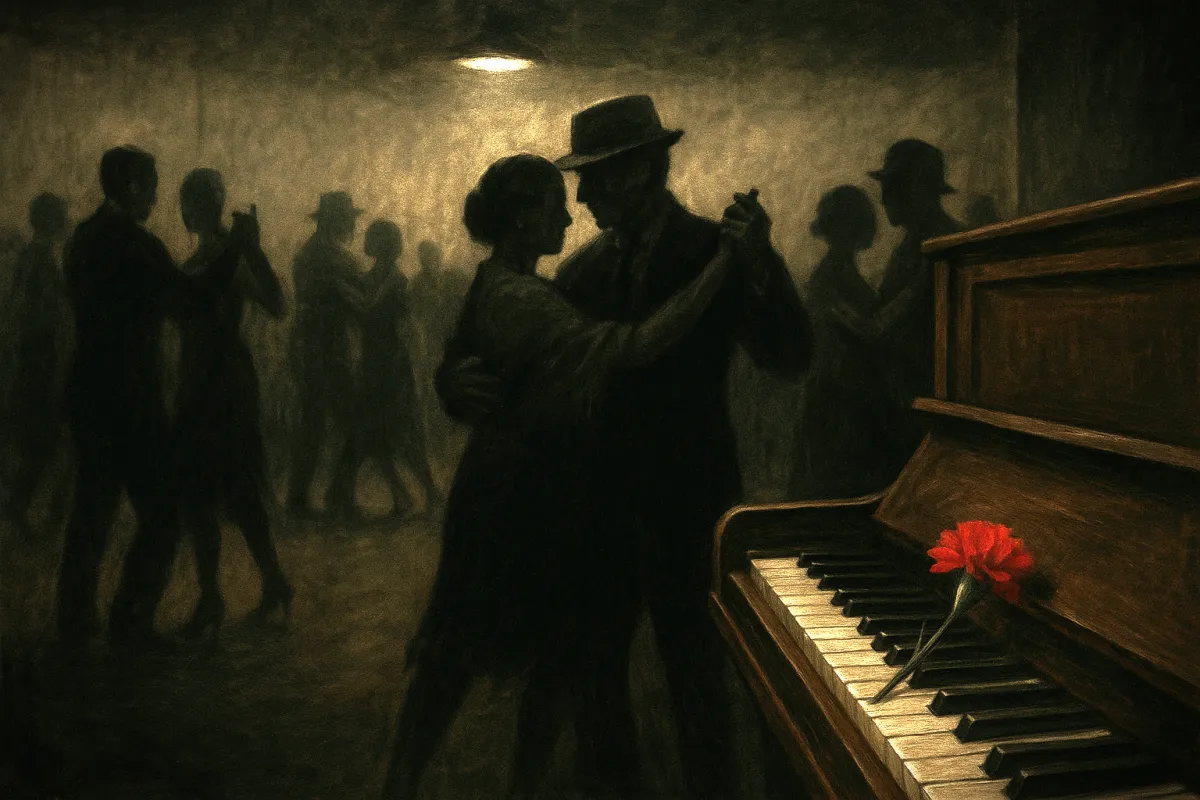
Tango - The Dance That Won't Die
[Photo Credit: Sora]
Tango has always been more than a dance. It’s a mirror — reflecting the social, political, and emotional undercurrents of Argentine society. That’s why, when Argentina’s political landscape shifted, tango didn’t just change — it was suppressed.
🔒 Why was tango censored?
After reaching peak popularity during the Golden Age (roughly 1935–1955) — especially under Juan Perón’s presidency — tango became entangled with national identity and working-class pride. Many tango artists openly supported Peronism, and tango itself became symbolic of that era’s values.
When Perón was overthrown in 1955, the new military regime sought to redefine Argentine culture. They saw tango as part of the old guard — politically inconvenient and socially outdated. Censorship took many forms: song lyrics were scrutinized or rewritten, certain tangos were banned from radio, and musicians suspected of leftist sympathies were blacklisted.
Radio stations were pressured to promote foreign music (like rock or jazz) over tango, which was reframed as too nostalgic, or even subversive. Some tango venues lost their licenses. Others shifted to new formats, or simply closed their doors.
💔 How did it affect the tango community?
Many milongas closed or saw attendance plummet. Dancers lost places to gather, and musicians struggled to book gigs. Young people increasingly turned to modern or imported music, leaving tango to fade into what some described as “a relic of the past.”
In more conservative neighborhoods and under the pressure of surveillance, dancing tango became an act done more quietly — sometimes in private homes, underground salons, or only within trusted circles.
A generation of dancers and musicians aged out without clear successors, and tango began to seem disconnected from the contemporary culture of Buenos Aires.
🎤 Censorship inspired coded protest
Some tango musicians defied censorship quietly yet powerfully—most notably Osvaldo Pugliese. A devoted leftist, he was repeatedly jailed under Perón and subsequent military regimes, and frequently blacklisted from radio and public venues (Tangology101; Independent.co.uk). Legend says when imprisoned, supporters placed a single red carnation on his empty piano, symbolizing solidarity and defiance (Independent.co.uk).
Specific examples of coded musical protest include:
"La Yumba": Pugliese’s rhythmic masterpiece symbolizing workers' strength and solidarity, subtly reclaiming working-class pride during oppressive times
"Sur" and "La última curda": Iconic tangos performed widely during exile eras, employing metaphors of departure ("trains leaving," "storms") to subtly address exile, loss, and resistance
🕊️ So how did tango bounce back?
Tango didn’t disappear — it simply moved underground and abroad.
The international revival of tango in the 1980s, sparked in part by stage shows like Tango Argentino, reignited global interest. Foreign audiences — in Europe, North America, and Japan — fell in love with the music and dance, reminding Argentines of the cultural treasure in their midst.
Local dancers, some of whom had never stopped dancing in private, began returning to the public eye. New milongas opened. A generation of teachers and DJs emerged to rebuild a scene that had nearly been lost.
By the 1990s, tango was not only resurging — it was diversifying. Social tango, tango nuevo, queer tango — each was reclaiming and expanding the art form in different directions.
🎶 What does this mean today?
When a Troilo or Pugliese track plays at a milonga, it’s not just about the music — it’s about history. Tango has weathered coups, censorship, globalization, and generational shifts. It has been political not through slogans, but through its ability to persist, to connect, and to make people feel something honest.
The resurgence of tango is not just a musical revival — it’s a cultural reckoning. A reclaiming of what was nearly erased.
Today’s dancers carry the memory of that resilience. And every nod across the floor, every tanda played with reverence, is part of that living legacy.
Written by Vienna Tango School with drafting support from ChatGPT. All facts have been cross-referenced with published tango history sources; some anecdotal interpretations reflect common oral histories shared among the Argentine tango community.


